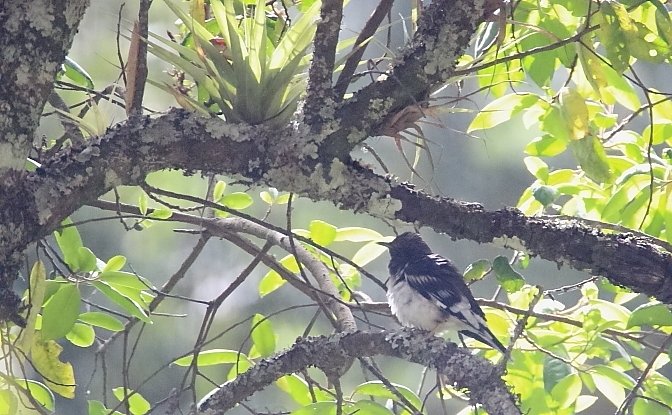
Many thrushes live or winter in Mexico, but their taxonomy is mostly quite simple. Eight of our large thrushes (the American Robin, western Mexico’s own Rufous-backed Robin, and eastern Mexico’s ubiquitous Clay-colored Thrush, among others) belong to the genus Turdus. Nine species (including the Hermit Thrush and its migratory identical-twin species, and our five non-migratory Nightingale-Thrushes) belong to the genus Catharus. Then we have three Solitaires (genus Myadestes), and three Bluebirds (genus Sialia).
But there are three thrushes in Mexico who are each the proud owner of their very own genus. There is the Varied Thrush, a northern bird that barely reaches northern Baja California in winter. The migratory Wood Thrush sure looks like a Hermit Thrush to me, but it apparently has its own genus. The third case, however, is a full Mexican endemic. This thrush, the only member of the genus Ridgwayia, is the aptly-named Aztec Thrush. (If you have to name a full Mexican endemic, Aztec Thrush sure beats Ridgwayia!)
I have, to date, three sightings of the Aztec Thrush. That puts me in some sort of select club, because this is one tough bird to see! EBird has, as I write this, only 575 observations recorded, and a shocking 3% of their reports with photos are mine. Not that my photos are all that great… (Proof can be seen below.) But they are, indeed, photos, and they do clearly show Aztec Thrushes.
Why are Aztec Thrushes so hard to see? I’ll leave that question to the experts. In Steve Howell’s excellent book A Guide to the Birds of Mexico and Northern Central America, he says this species “Sits still for long periods and [sic] overlooked easily; best detected by voice.” But the Merlin app says that it is “Usually rather quiet, and can sit still for long periods.” The Audubon app says that it is “Quiet and shy”. Oddly, that app does not comment that the Aztec Thrush sits still for long periods. But fear not, the National Geographic Field Guide to the Birds of North America does: “Sits still for prolonged periods.” My friends, be forewarned: Aztec Thrushes are apparently really fond of sitting. (Which begs the question: Do thrushes really sit? I thought they perched.)
There is another problem here: This is a “quiet” bird (Merlin and Audubon) that is “best detected by voice” (Howell). That is not a good combination! And, in fact, in none of my very fortuitous sightings have I heard any vocalizations. I believe the only reason I have been lucky enough to see Aztec Thrushes is because I live in the Michoacán highlands. Spend enough time in the oak forests around here, and eventually, dumb luck is bound to strike; you will see one. It will, presumably, be sitting, and for a long time.
Being such a difficult species, I was very grateful that my first sighting of the Aztec Thrush, in April of 2017, involved not only photos, but also witnesses. My Mexican birder friend Fabián V. had asked me to take him, his American birder friend Bob S., and their wives, to my nearby site of Pino Real. We had a great day, with all our target species showing up: Chestnut-sided Shrike-Vireos, Red-headed Tanagers, Mountain Trogons, Gray-barred Wrens, Blue Mockingbirds, Brown-backed Solitaires, and Rufous-capped Brushfinches, among many others. I was surprised to be able to show them a pair of Hooded Grosbeaks. But the real shock was when I looked into a tree and saw… could it be?…. my first male Aztec Thrush! (Yes, I must humbly note, I saw it first.) The photo at the top of this post is of that magical bird. Then, as everyone else looked in the same tree, we realized there were more thrushes there. My notes for the day said that we disagreed whether we saw as few as three, or as many as six. But my photos leave no doubt that there were at least three.
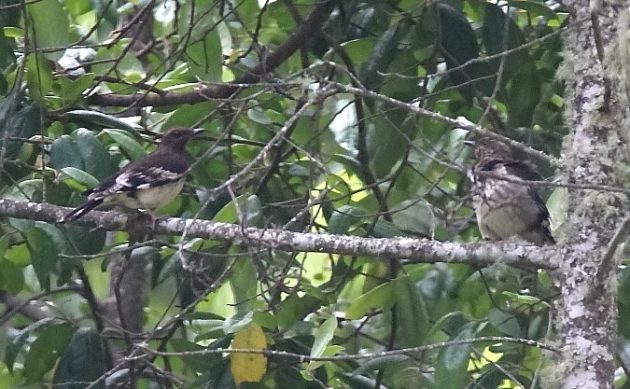
There’s a female to the right in this photo.
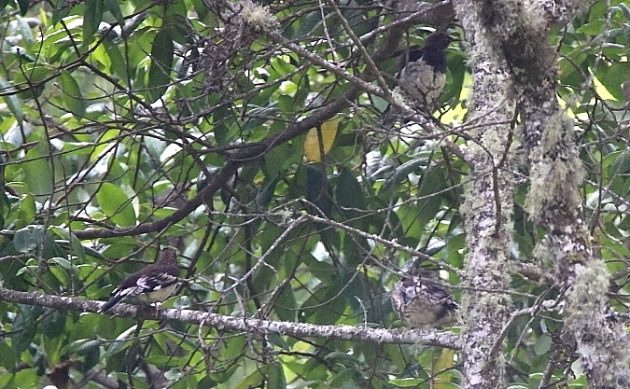
And this one has the original two, plus another male above.
While not the photos I would like to have, my shots do make it clear that male Aztec Thrushes dress themselves in a bold pattern of black and white. Black and white: always a tasteful choice; very editorial. Females do more gray than black, but are still lovely birds — if you can see them. They will be sitting, of course.
I’ll include photos from my other two sightings, just to show that I really have seen this species three times. This one is also also from Pino Real, in April of 2018. It’s a truly sad little photo. But it is unusual, in that it reveals a second sighting from a single site. The Aztec Thrush, you see, rarely seems to turn up repeatedly in a single place. In spite of its reputation for sitting, this is a bird that loves to move around. A quick study of sightings on eBird reveals very few places where this bird has been seen repeatedly: the Nevado de Colima, the Tufted Jay Reserve in Sinaloa, and the mountains north of the city of Oaxaca. I look for it every time I go to Pino Real. But have only seen it there twice.
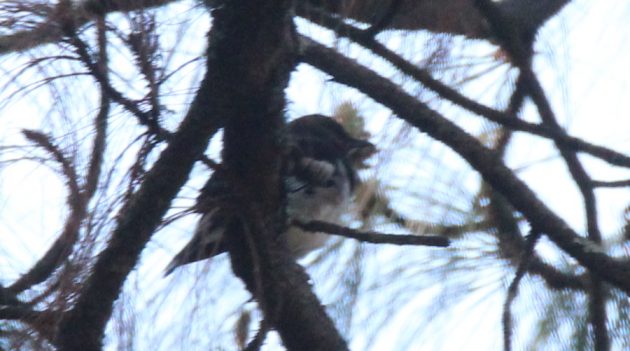
My final photo is indeed from a different site; one which I visit often, but in which I have only once seen an Aztec Thrush. This photo is from El Temascal, in April of 2019.
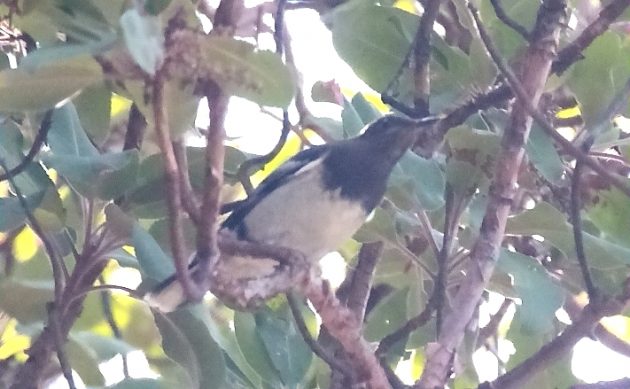
It has now been more than two years since my last sighting of an Aztec Thrush. Since then, a friend saw and photographed one within the Morelia city limits. I dearly hope I can see another one soon.
I won’t even mind if it is just sitting.











Leave a Comment